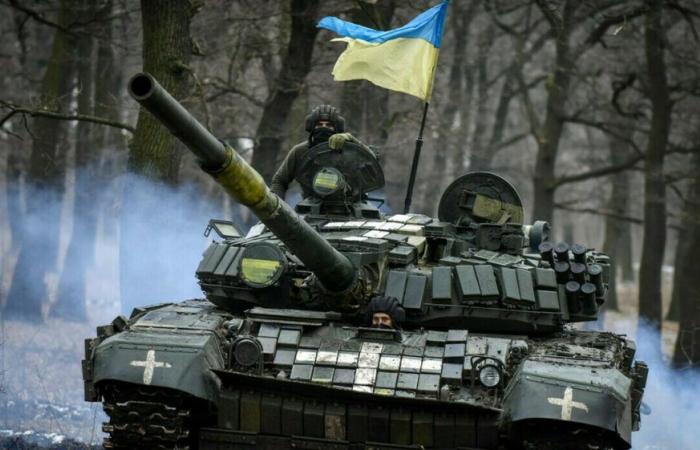The M1 Abrams tanks supplied by the United States have landed in a storage facility built by NATO in Poland. They are capable of equipping an entire brigade of the American army and this, an analyst points out, “represents a clear message to Russia”. And the surge in tension between the US and the Federation following the conflict in Ukraine also threatens to start a new missile arms race. Vladimir Putin has in fact announced the intention to resume production of short- and medium-range vectors in response to similar initiatives by the US, which since 2019 withdrew from the INF treaty, signed in 1987 between Washington and Moscow, which banned such weapons.
Ukrainian War, Men on the Run to Evade Conscription. “We Are Not Made for Conflict”
The warehouse
Citing a U.S. Army source, Newsweek reports that 14 main battle tanks and an M88 armored recovery vehicle have arrived at a NATO-organized stockpile in Powidz, about 250 miles west of Poland’s border with Ukraine. It’s unclear whether the tanks were later transferred to Ukraine, where an estimated 31 Abrams tanks are already deployed. The Polish depot is intended to bolster NATO’s defenses in Eastern Europe, a move prompted by rising tensions between the alliance and Russia. Ray Wojcik, a former U.S. Army colonel and senior fellow at the Center for European Policy Analysis, predicts the storage site will have equipment capable of meeting the needs of a U.S. armored brigade. “That means that on very short notice, a whole company of soldiers can be airlifted to Poland and be ready to fight in a matter of hours, compared to waiting about 30 days for the equipment to arrive by ship,” he told Newsweek. As the only U.S. military site east of Berlin, Ray points out, “that would send a message to Russia.”
Vulnerability
The Abrams, which arrived in Poland on Thursday, cost around $10 million each and represent the cornerstone of the US military support package for Ukraine. The tanks were an explicit request from Kiev, however their size and complexity of the supply chain have sparked intense debate ahead of their delivery in 2023. Last May, Ukrainian vehicle teams made their findings known to CNN concerns about the insufficient resistance of the tanks to modern weapons equipment. While US military officials told The Associated Press that the vehicles were being withdrawn from battlefields due to their vulnerability to Russian drones. As demonstrated by some images released on social media showing a burning M1 Abrams on the front line after a drone attack: Russian state media reported that Moscow’s forces had hit three tanks near Avdiivka, immediately after the occupation by Russia. Meanwhile, the United States is preparing to announce a new military aid package for Ukraine worth around $150 million, which is expected to include new High Mobility Artillery Rocket System rockets, anti-tank weapons, small arms and grenades. The tranche of aid would include 155 mm and 105 mm artillery shells, the Associated Press reports, and also HAWK air defense interceptors, according to Reuters.
Logistics
The dispatch of the Abrams was preceded by an internal tug-of-war in the United States. The White House was in favor, as revealed by the Wall Street Journal, contrary to the opinion of the Pentagon, which considered the vehicles unsuitable for the theater of operations due to their high consumption of jet fuel and the logistical difficulties associated with their deployment. Used in the first Gulf War, in Afghanistan and Iraq, Abrams tanks are the pinnacle of American armored vehicles, perhaps the most powerful in the world, capable of resisting nuclear, biological and chemical attacks. The first version (M1) was produced in 1978 by Chrysler Defense, now General Dynamics Land Systems, and takes its name from General Creighton Abrams, who led American troops in the Vietnam War from 1968 to 1972. They entered service in 1980 and in 1985 production of the M1A1 began, followed by that of the latest generation, the M1A2. Weighing 62 tons, the M1A1s are equipped with direct-reaction engines and are equipped with a 120-millimeter cannon, capable of destroying a building at a distance of almost four kilometers, and reach a speed of 70 kilometers per hour. They have depleted uranium armor to prevent penetration by HEAT (High-explosive anti-tank) projectiles, a high-potential explosive designed specifically to destroy tanks.
© ALL RIGHTS RESERVED






